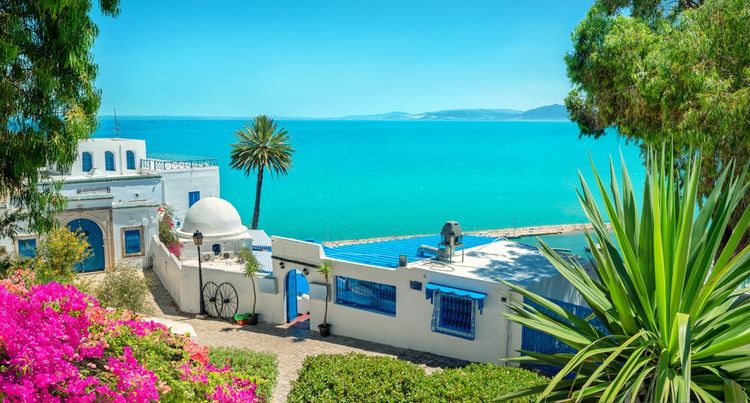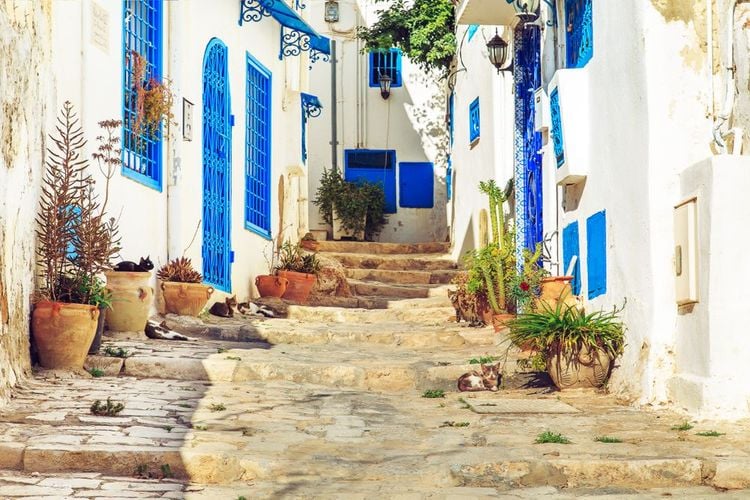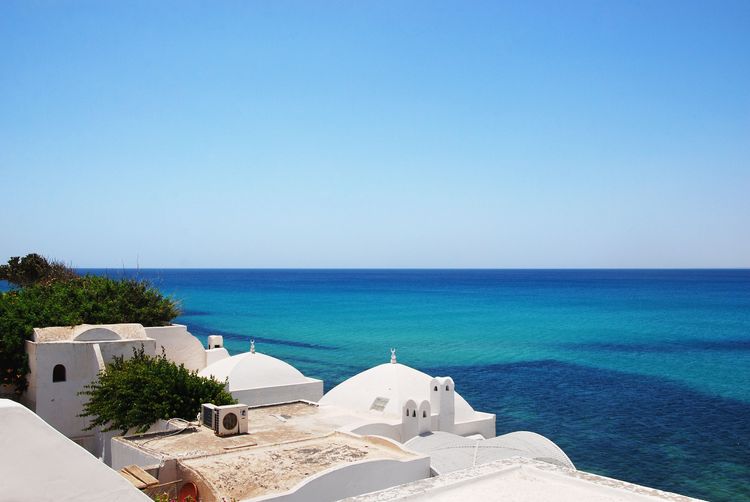Perched on a cliff 130 metres above sea level overlooking Carthage and the Gulf of Tunis, Sidi Bou Saïd bears the name of a saint: Sidi Bou Saïd. The Punic Carthaginians and then the Romans were already present in this area, which was nicknamed Cap Carthagena (promontory of Carthage) in ancient times. After the Arab conquest in the 7th century and the fall of Carthage, the promontory retained its strategic position, with the construction of watchtowers and a lighthouse to defend the north-eastern coast of Tunisia. This explains the name of the hill on which Sidi Bou Saïd nestles: Djebel El Manar ("Lighthouse Mountain"). As for the name of the village, it's simply Sidi Bou Saïd (1156-1231), who at the end of his life retired to the top of Djebel El Manar, the hill overlooking Cap Carthage, to stand guard and teach Sufism.
From the 17th century onwards, the charm of this village attracted the Tunisian bourgeoisie and the bey's family, who built luxurious Arab-Muslim mansions here.
On 28 August 1915, a decree imposed a blue and white ban on all uncontrolled construction on the promontory, making Sidi Bou Saïd the first listed site in the world.
Until 1825, Sidi Bou Saïd was off-limits to non-Muslims. From then on, the blue and white village attracted many artists, musicians and writers, including Chateaubriand, Gustave Flaubert, Paul Klee, August Macke, Alphonse de Lamartine, Georges Duhamel, André Gide, Colette and Simone de Beauvoir. Michel Foucault wrote L'Archéologie du savoir.














